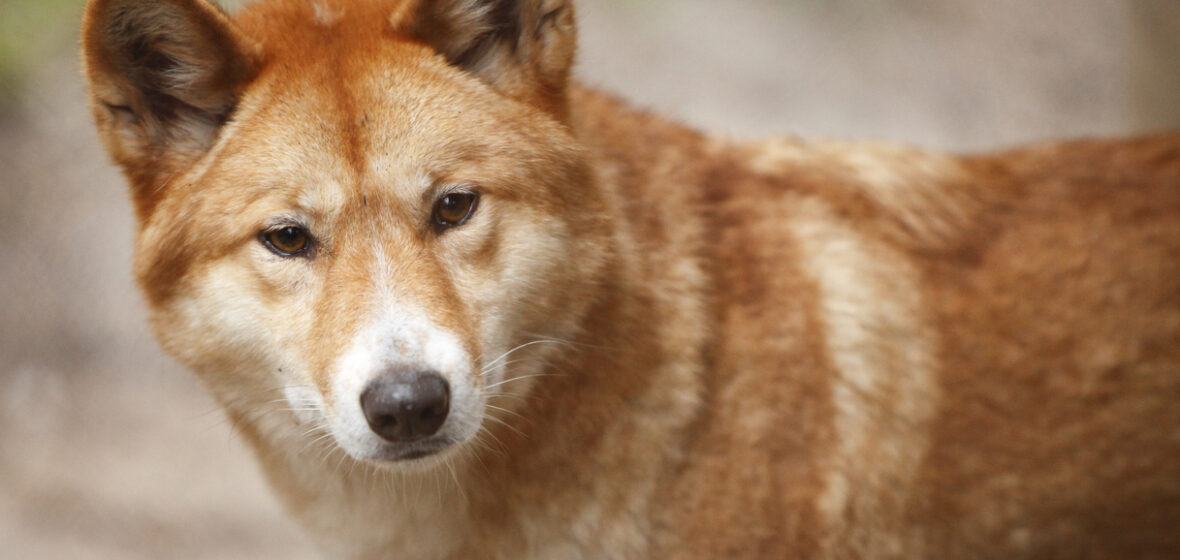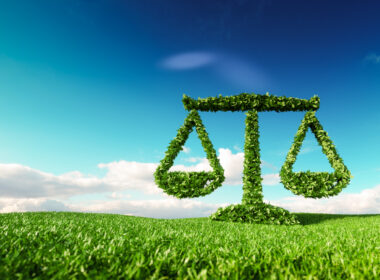The inaugural National First Nations Dingo Forum has called for recognition of the dingo as a native species deserving legislative protection from lethal control.
The Forum was initiated by Girringun Aboriginal Corporation, based in Cardwell (midway between Cairns and Townsville). In all states except for Tasmania, the dingo is recognised as a native species but it is also legislated as a pest and often managed using lethal control, even in native parklands. This has included baiting, shooting and trapping dingoes as a means of preventing attacks on agricultural livestock.
Establishing a declaration
The Forum was an opportunity to bring First Nations peoples, rangers, scientists and lawyers together to discuss the cultural, ecological, legal and political aspects of dingo management and protection, with the goal of having a voice to government and an avenue towards First Nations people being actively consulted and engaged in legislative changes to dingo management in Australia.
The Forum was based on four pillars: providing a First Nations perspective; a review of current methods of management; a review of legislation; and a comprehensive First Nations dingo statement.
The resulting statement, the national dingo declaration, has been signed by representatives from more than 20 First Nations groups. It declares, “We do not, and have never, approved the killing of dingoes. Killing dingoes is killing family. We demand an immediate stop to this ‘management’ across Australia.”
The statement clarifies that dingoes (“the boss of Country”) are genetically different from feral and domestic dogs, and therefore should not be treated under legislation designed for “wild dogs”. This is backed by genetic and environmental scientists, nearly 30 of whom collectively signed a letter to the NSW, Victorian and South Australian governments in August that highlighted new research proving the genetic differences between dogs and dingoes, and the rampant misconception that “wild dogs” were feral domestic dogs rather than dingoes.
LSJ spoke with Girringun Aboriginal Corporation spokesperson Sonya Takau, scientist Dr Kylie Cairns, and lawyer Tess Vickery about the implications of the national dingo declaration.
Not protected under NSW law
Lawyer Tess Vickery is the first Australian graduate of the Animal Law LLM degree at Lewis & Clark Law School in Oregon, USA. After a couple of years working on class actions with Maurice Blackburn Lawyers in Sydney, she undertook her Master of Laws (Animal Law) degree between 2018 and 2019, before joining joined the Animal Justice Party in June 2019 as Policy Advisor.
According to Vickery, “Schedule 5 of the Biodiversity Conservation Act 2016 (NSW) provides that all native animal mammals are ‘protected animals’ – except dingoes. At the same time, dingoes – under the false label of ‘wild dogs’ – are targeted through legislation like the Biosecurity Act 2015 (NSW), which requires any person dealing with ‘biosecurity matter’ to take reasonable measures to prevent, minimise or eliminate the associated ‘biosecurity risk’. This includes ‘wild dogs’, who have been classified as a ‘priority pest animal’ in various regional animal management plans throughout NSW.”
She adds, “The result is that in NSW, like most other states, dingoes are targeted and killed using a combination of cruel methods such as 1080 poison baits, trapping, shooting and use of exclusion fencing – all of which have been proven to cause significant animal suffering, and pose a serious risk to both dingoes and other non-target species.”
Victoria is the only state where dingoes have a protected status as a ‘threatened species’.
“This protection has been undermined by an ongoing ministerial exemption, known as the ‘Dingo Unprotection Order’, which means dingoes receive no protection on private land (including farmland) and surrounding areas,” Vickery says.
“Victoria and several other states operate an archaic bounty scheme that encourages recreational hunters to kill dingoes by offering payment for every ‘wild dog body part’ or ‘scalp’ delivered to the government.”
The dingo is “boss of Country” with immense cultural value to Indigenous Australians.
Sonya Takau is the spokesperson for Girringun Aboriginal Corporation.
She says, “The dingo is the most villainised animal in this country. It’s not protected anywhere, not even national parks.”
This is more than unjustifiable; it causes ongoing suffering to First Nations people for whom the dingo is considered family.
Takau says, “The dingo is everywhere in Aboriginal culture. There are three things that are important to Aboriginal people: land, language and culture. The dingo, in essence, is a family member. My obligation, and my cultural practice, is that I’m not allowed to hurt that animal because it’s a family member. Our identity is crucially aligned with totemic species, animals and plants. There are stories everywhere about the dingo. We are an oral culture, everything is in stories and language and that’s ingrained in us from childhood.”
The National Dingo Forum took years of planning to come to fruition, explains Takau.
“At Girringun, this forum has been in the planning for the last three years. We’ve worked hard and received philanthropic and private donations so that we are not reliant on government interference. We wanted to talk about how we [Indigenous Australians] want to be involved in the management of this animal … it was a powerhouse of two days, and we wanted to make sure that we made our point that we want to be at the table when it comes to the legislation around dingo management.”
The goal of the forum and the subsequent declaration was to unite stakeholders in conversation and a shared determination to change legislation and attitudes of federal, state and local governments – and the public – to dingoes.
“We want the livestock industry, farmers, First Nations people, scientists and governments to come together and agree that lethal control is no longer acceptable,” Takau says.
“We are still working on a model, but the key message is that if governments and the meat and livestock industries can fund baiting, trapping and shooting, and there are billions spent on the poison industry, then there’s no excuse to reinvest that money into non-lethal management. That might be guardian animals like donkeys, which are proven to protect livestock.”
Takau concludes, “The dingo is no different to any other apex predator; they have a role to play in the natural environment, that’s scientifically proven. It’s like Africa without lions. Dingo is boss of Country, he belongs on Country, looking after Country.”
Genetically not ‘wild dogs’
One of the researchers, and a signatory to the letter to government, was Dr Kylie Cairns, Research Fellow on Canid and Wildlife Genetics at the University of NSW. Cairns, who has studied dingoes for 13 years, was a key speaker at the National First Nations Dingo Forum, and she spoke with LSJ about the misconceptions guiding current legislation and the problematic nature of defining dingoes as both a native species and a pest.
“They’re halfway between a domestic dog and a wolf, so they’re very interesting. They’re a fully functioning predator but they look like a domestic dog,” Cairns says.
“Dingoes are distinct from domesticated dogs. The term ‘wild dogs’ has been used despite hybridisation between dingoes and domesticated dogs. So, ‘wild dogs’ includes feral dogs, dingoes and domestic dogs under a catch-all name.
“This creates complexity around how dingoes can be conserved and managed in NSW because whilst dingoes are classified as native animals they are not protected. Wild dogs, including dingoes, are a listed pest species across NSW so landholders are obligated to manage them in some manner.”
Cairns says new research findings from her and her colleagues at UNSW identified that close to 70 per cent of “wild dogs” are pure dingo DNA while the remaining 30 per cent are more than 80 per cent dingo DNA.
None of the “wild dogs” they studied were feral dogs nor crossbreeds, proving the majority of animals being controlled in national parks are actually dingoes, not wild dogs.
“It’s problematic because a native animal should not be subject to lethal control within a national park, but I understand dingoes do cause impact to livestock producers,” she says.
“I understand why that pest legislation was put in place, but we didn’t have clarity on the identity of wild dogs in NSW until recently, we had previously thought they were largely hybrids and crossbreeds.
“Because we call dingoes ‘wild dogs’, the public doesn’t realise that the lethal control measures target dingoes rather than feral dogs.”
On August 8th this year, Cairns was one of 30 scientists who addressed a letter to State Environment Minister Penny Sharpe and Agriculture Minister Tara Moriarty.
“I’ve written several submissions to state governments asking them to update their public policies around dingoes. The letter to Penny Sharpe and Tara Moriarty outlined the new research and implications for policy as well as arguments for why policy needs to be shifted. As yet, we’ve had no responses,” Cairns says.
Coexisting with predators
In Canada, the wolf was once viewed as a predator, a threat to livestock and human, and killed until public education took place and an annual “International Wolf Day” celebrated the animal. They have been reintroduced into some North American national parks.
After being eradicated from Yellowstone National Park in 1930, wolves were reintroduced in 1995. Scientists observed that subsequently, the beaver population increased, and vegetation improved.
Vickery believes a similar situation is possible in Australia.
“Australians care deeply about animals, and do not want to see any species – including the dingo – being harmed and killed,” she says.
“As scientists continue to dispel the myth of the ‘wild dog’ and highlight the critical ecological role dingoes play as an apex-predator, the public is increasingly coming to appreciate and celebrate the dingo as an iconic Australian animal.”
Cairns says the question of how humans and livestock can coexist with dingoes is not unique to Australia.
“That’s a global dilemma. Some alternative measures to baiting, trapping and killing are introducing livestock guardian dogs or donkeys, the use of electrified fences to deter large predators from entering agricultural lands, changes to animal husbandry to ensure secure fences, and moving livestock to barns or internal paddocks when young animals are vulnerable,” she says.
“There’s a range of strategies and there’s no easy, overnight answers. [Fellow UNSW scientists and I] have argued that we need to change policy, and some of the money used to bait in national parks could be directed to livestock producers to install better fencing or introduce guardian animals to provide tools to protect livestock.”
Next steps to change
Vickery says, “The animal agribusiness industry has been the primary force behind the harmful anti-dingo rhetoric, seeking to falsely classify these animals as ‘wild dogs’ and have them eradicated for their own benefit.”
“It is time to stop the false rhetoric and demonisation of the dingo.”
Animal protection legislation in Australia is predominantly state-based, so it is likely that any reforms to protect dingoes would need to occur on a state-by-state basis, she explains.
“If dingoes were declared a ‘threatened species’ under the Environment Protection and Biodiversity Conservation Act 1999 (Cth), their protection could be coordinated at a national level,” she says.
“However, previous nominations to designate dingoes as ‘threatened’, including the most recent nomination in 2017, have not been successful.”
There is reason for optimism though. Another native Australian animal experienced the same vilification before receiving formal protection. On February 12 2022, the koala populations in Queensland, New South Wales and the Australian Capital Territory were classified as ‘Endangered’ under the Environment Protection and Biodiversity Conservation Act (EPBC Act) 1999.
Vickery says, “Koalas were once widely hunted and kill for their furs; now, they are a protected species in every state and territory in Australia. It is time to ensure dingoes receive the legal protections they deserve as sentient, native animals.”




